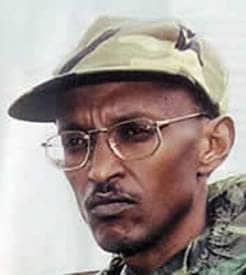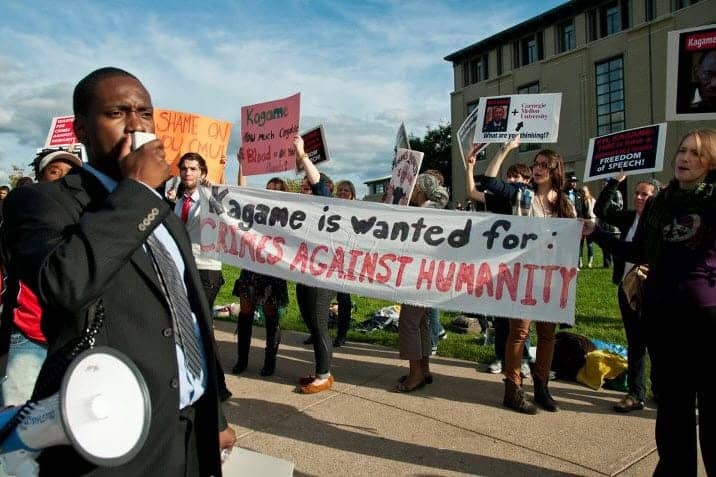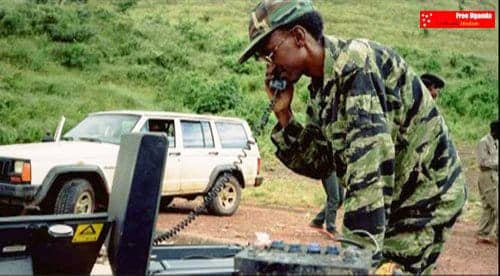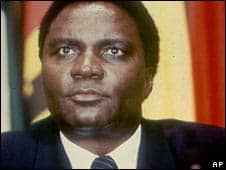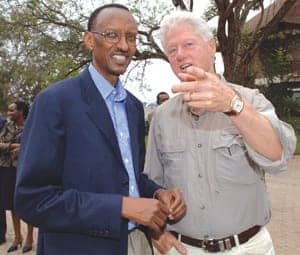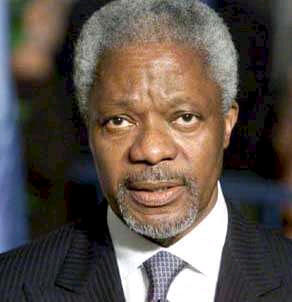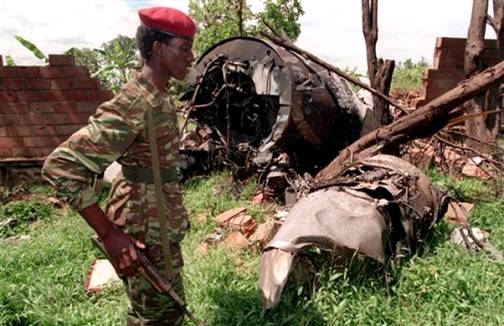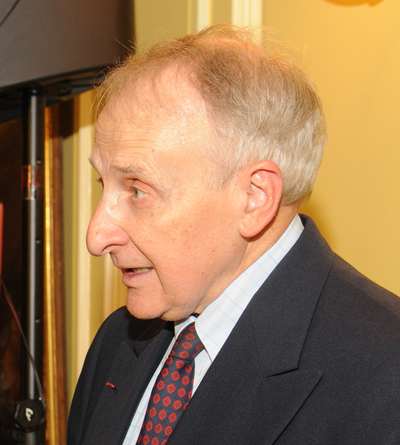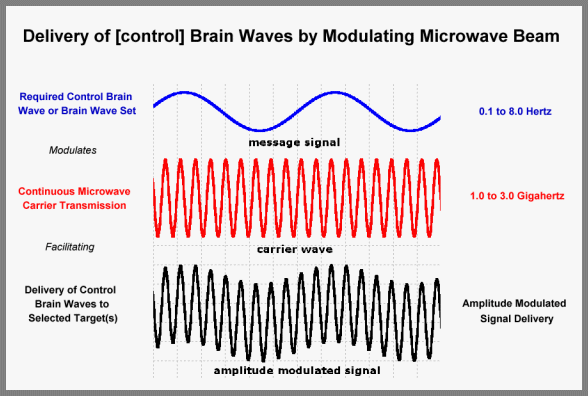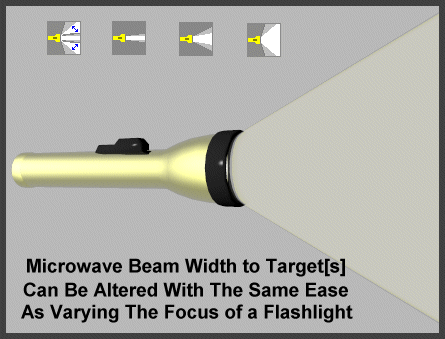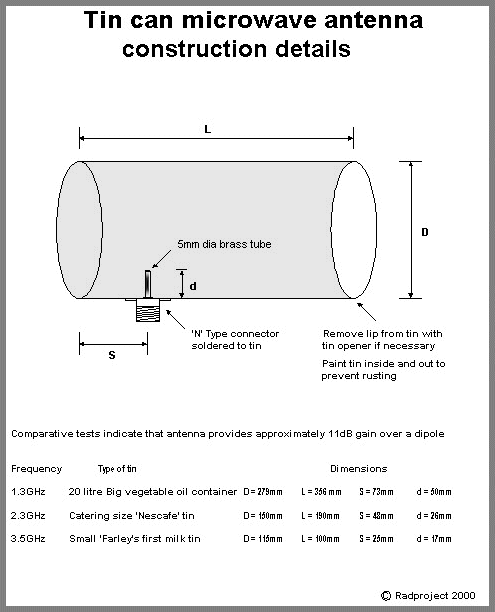Paul Kagame visits Bejamin Netanyahou in Israel, October 1996.
Mass Rape & Genocide in Rwanda, 1994
The Untold Story of How the Western Press both Ignored and Manipulated the Issue of Rape of Women and Girls During the 1994 Cataclysm in Rwanda, and Why.
by Keith Harmon Snow
April 2004
April 15, 2004: This story is excerpted from a longer article, “Rape As A Weapon of War,” published March 1997 by PEACEWORK, the magazine of the American Friends Service Committee. In that article, the role of the Rwandan Patriotic Front as US proxy army was misunderstood. The article has been adjusted, therefore, to reflect the appropriate history and role of the Rwandan Patriotic Front in the “Rwanda Genocide.” See numerous other Rwanda/DRC articles on this site for further analyses of the hidden history of the Rwanda Genocide.
March 28, 2005: The question and scale of “genocide” in Rwanda has been greatly misunderstood by this writer, based on the overwhelming disinformation and pro-US / RPF flak produced before, during and since the 1994 cataclysm in Rwanda. This feature remains therefore highly problematic – from the author’s own point of view. The RPF position is appropriately delineated, but the rest remains in need of additional and serious revision. Those parts needing significant attention have therefore been bolded herein for the short term solution.
From April to November 1994, the US media was blanketed with daily front-page features on Rwanda, hundreds of stories, text and photos revealing the "hopeless" African propensity to "mindless slaughter" and "tribal massacres." The articles vary little in the scope of their reportage, and never provide any investigation, but regurgitate new and old themes, ever reassembling the facts to serve the desired result of saying everything while really saying nothing at all. In fact, the more you read, chronologically, in any given paper, the less you will understand, and that is no accident.
Media representations depicted the "indiscriminate" killing and "orgies of bloodletting" as ostensibly anathema to the West. No rapid and sophisticated deployment of troops to "secure" Western interests here (e.g. as in Iraq; Panama; Grenada), "[t]he main option," wrote Joshua Hammer, for Newsweek, "seems to be to wait out the slaughter and hope to survive."
Indeed, "[m]adness descends periodically onto the verdant and overpopulated hills of Burundi and Rwanda," Hammer wrote, in The New Republic, (quite a different article) which later editorialized the "pointless" nature of intervention in Rwanda. (That is a very telling editorial position.)
In his 1998 speech to genocide survivors in Rwanda, President Clinton suggested that the US did not respond because the government did not know what was happening at the time. This theme has become the standard nonsense on the “Rwanda Genocide,” and it is repeated by both progressive and conservative sources. Indeed, throughout the media blitz one theme ever chimed was that of the hopelessness of a conflict in which the US had no role. Through the systematic and persistent use of symbols, stereotypes, and images, the media ever reinforced the peculiar nature of African "tribal" and "ethnic" violence. Contrary to the media's "deep-seated ethnic and tribal animosities," is evidence that ethnicity is not the root cause of civil strife in Rwanda.
More important however, is the evidence that the US administration knew perfectly well what was going on¾because the US was involved in the invasion of Rwanda, and may have been privy to the plans for the presidential assassinations that sparked the conflagration¾and that the media served its function as the propaganda corps for the world’s corporate and military elite.
As early as 1990 the alarms were sounding on Rwanda. They were ignored, and it was no oversight. The “Rwanda Genocide” – as the pro-US / pro-RPF position would have us believe – was organized within a close circle surrounding Rwandan President Juvenal Habyarimana (1973-1994), and 1990 to 1994 saw massacres of his opposition increase, with executive sanction, and with complete impunity.[5]
Habyarimana was a reluctant participant in the Arusha Accords (1993): evidence attests to the regime's persistent provocation of violence.[6]
In 1993, two close associates of Habyarimana (a brother-in-law and a son-in-law) set up the private radio station, Radio Mille Collines, that subsequently propagandized hate and violence against opponents of the regime.[7]
The Bush Administration's 1992 Annual Report to Congress stated that Rwanda's "relations with the US are excellent," with "no evidence of any systematic human rights abuses by the military."
Even as the April 6, 1994, assassination of Habyarimana sparked the "final solution" by Hutu extremists, the media continued to extol his virtues. "Mr. Habyarimana excelled at strengthening ties to the West...at a time when a number of other African leaders were being accused of running corrupt and inefficient governments," wrote the New York Times in an "obituary" (4/7/94). "In 1990 he sought to make a major break with the past, but his efforts to reach a peaceful settlement were not successful." [9] A later editorial called Habyarimana a "peace-seeking" president.[10]
The international community both ignored and supported preparations for the Rwanda genocide. French intervention from 1990-1993 included deployment of its elite Rapid Action Force and, by 1993, some 55 million French francs (US$ 10 million) in military aid to the Habyarimana regime. In January 1994, Human Rights Watch published a lengthy report, ignored by the US media, which detailed egregious responsibility for the ongoing international proxy war.[11]
Rwanda's Paul Kagame was trained at Ft. Leavenworth (Kansas) under the International Military Education Training Program (IMET), where $769,000 trained 35 Rwandan officers at US military schools from 1980 to 1992, and $120,000 was earmarked for Rwanda for both 1994 and 1995. Further military assistance was provided by the US to 1994, while the bulk of the arms and logistical support came from US client states (France, South Africa, Egypt, Uganda and Zaire).
On January 11, 1994, after communicating details of the coming cataclysm, Major General Romeo Dallaire, the Canadian commander of U.N. peacekeeping forces in Rwanda (UNAMIR), requested U.N. authorization to confiscate arms caches.
Authorization denied, Dallaire was ordered to expose his intelligence sources to the Habyarimana regime. The genocide unfolded soon after a delegate from the extremist "Hutu" government rotated onto the exclusive U.N. Security Council, and subsequently worked, with complete legitimacy, and not in any minority, to manipulate or block all actions toward "humanitarian" intervention.
The missile attack that downed the plane carrying Rwanda and Burundi Presidents was shrouded in secrecy, but revelations have consistently suggested that this double assassination was planned and executed by the Rwandan Patriotic Front, with probable US intelligence or military knowledge, if not support. Most notable is that the United States has worked to block every attempt to investigate the fatal plane crash. At the time, the commander of the initial ill-fated "peacekeeping" UN Observer Mission to Rwanda (UNOMIR I), Canadian General Romeo Dallaire was reportedly “prevented by Rwandan Patriotic Front (RPF) soldiers from investigating the crash cite.” However, this story is not an expose on the plane crash, the details of which will be addressed in a future article, but an expose on the media’s coverage of rape during the explosion of violence and the implications of this in terms of their support of the US proxy war and RPF invasion.
While U.N. Security Council Resolution 872 (11/93) authorized the UNAMIR force of 2500 soldiers from 23 countries (with no US soldiers), Resolution 912 cut troops to 270, with neutered mandate, at the height of the genocide (4/21/94). The US repeatedly blocked Resolution 917 on intervention; Resolution 918 (5/17/94) authorized a force of 5000 (UNAMIR II), but it delayed until August and then only fleetingly deployed. US Presidential Decision Directive 25, designed to thwart US action in situations like Rwanda, was also promulgated during the early stages of “the genocide” (5/5/94).
Through the smokescreen of "Operation Turquoise," France protected, armed and fought for Hutu forces, but "Turquoise" was sold by the unquestioning and disingenuous US media as a "humanitarian intervention"¾with only oblique references to true French interests and involvement.[14]
Ronco Company, authorized by the US to do "de-mining work" in Rwanda in 1995, was importing armored vehicles and explosives in violation of the U.N. embargo on Rwanda: with Pentagon approval, this equipment was turned over to the Rwandan military (RPF). Halliburton subsidiary Brown and Root was also reported to be in Rwanda after 1994.
US involvement in Rwanda includes "counterinsurgency" training, "psychological operations" and tactical Special Forces. (Special Operations Command oversees Navy Seals, Army Rangers and Delta Force, elite units deployed as special operatives in covert operations.)
The media painted the Rwandan conflict as a "sudden unexplainable convulsion of violence."
Slaughter was attributed to mindless, machete-wielding masses, while mass executions committed with machine-guns were disproportionately revealed. Like modern structures indicative of "civilization," the sophisticated weaponry deployed -- helicopters and artillery and perhaps tanks -- in Rwanda (and Zaire) was (is) never revealed in the media's select "African" photos. White expatriates were evacuated quickly: U.N., embassy or relief agencies abandoned virtually all local African personnel.
Amongst the many examples of systematic US media propaganda on 1994 Rwanda however, consider reportage on rape. The 1994 genocide saw mass rape, torture, mutilation, enslavement and execution of women. While human rights and humanitarian relief workers, journalists and military observers all knew that mass rape was the rule, the US media selectively excluded it. It was not reported at all.
Almost.
According to Human Rights Watch (HRW)
¾whose reportage and analyses on the “Rwanda genocide” virtually exonerate the Rwanda Patriotic Front from its major role in committing acts of genocide, crimes against humanity and other human rights violations, in its their right, against hundreds of thousands of people, minimum, in 1994
¾i
n the years preceding the genocide extremist propaganda which exhorted "Hutu" to commit the genocide "specifically identified the sexuality of Tutsi women as a means through which the Tutsi community sought to infiltrate and control the Hutu community." Propagandists portrayed Tutsi women -- considered more beautiful than Hutu women -- as "calculated seductress spies bent on infiltrating Hutu ranks." Some observers believe that almost every woman and adolescent girl who survived the genocide was raped¾though the perpetrators have since been subsequently misidentified in many cases. Ages ranged from two to over fifty. Testimonies of survivors confirm that thousands of women were individually raped, gang-raped, raped with objects such as sharpened sticks or gun barrels, held in sexual slavery, or sexually mutilated. Many victims were subsequently killed. Citing the U.N. Special Rapporteur on Rwanda, HRW reported that rape was the rule and its absence the exception, that the number of pregnancies caused are estimated at 2000 to 5000, that there may have been at least 250,000 rapes -- perhaps 500,000.[19]
Witnessing the widespread slaughter¾which the RPF was almost certainly expecting, and even counting on¾Paul Kagame and the Rwandan Patriotic Front (RPF) stepped up their invasion of Rwanda and quickly mobilized against the French-backed Rwandan government forces and their highly-trained civilian militia.
Faced with the prospect of dynamic but uncertain geopolitical change, the New York Times dispatched Raymond Bonner, whose reportage on Rwanda won him a prestigious Overseas Press Club award¾most likely because of what he never said. Bonner consistently implied that the RPF invasion and the ongoing civil war had “sparked an explosion of tribal violence,” and, hence, the subsequent refugees crises. This is not what happened.
In the context of Bonner's prolific and often front-page reportage from June 1994 to January 1995, however, the subject of rape was almost entirely omitted. There was no suggestion or inference that rape -- indiscriminate or systematic -- may have occurred.
As in two then contemporary New York Times articles by Donatella Lorch, rape was mentioned twice by Raymond Bonner, each time in the context of "unverified" atrocities allegedly committed by the "invading" RPF rebels. Further, all of these reports, mentioning rape almost in passing, occurred in the later stages of the April to August conflict.
Bonner and Lorch both reported on the theme of the RPF army being "remarkably disciplined."
But the genocidal mass rapes were first reported by the Christian Science Monitor on March 27, 1995.
Donatella Lorch then followed with "Wave of Rape Adds New Horror to Rwanda's Trail of Brutality" on May 15, 1995.
Again on September 23, 1996, the New York Times ran "Legacy of Rwanda Violence: Thousands Born of Rape."
Here is the prevailing question: Why was the rape of hundreds of thousands of women selectively unreported amidst blanket international media coverage of the Rwanda genocide? Whether it was Hutu’s raping Tutsis, or Tutsis raping Hutus, why was the subject of mass rape was off the agenda?
According to human rights workers, it was obvious as early as May 1994 that rape was the rule, not the (rebel) exception. AID workers knew it, human rights workers knew it, military observers knew it, and the New York Timesjournalists certainly knew it. As one human rights worker said, "it's not surprising that the rapes weren't reported. Rape has never been considered a war crime." [25]
That Raymond Bonner and Donatella Lorch did report on rape, however, but only in the context of alleged atrocities by rebel forces, reveals that different journalistic standards, or some political expediency, were applied to the coverage of rape: the supposed infrequent and few rapes perpetrated by the RPF were reported, the genocidal mass rapes were not.
The New York Times' invocation of rape was designed to influence public opinion. Rape was presented as an injustice, but one that was perpetrated only infrequently, and then only by RPF rebels. The New York Times went out of its way, comparatively, to cite (supposed) professional discipline and self-control exercised (reportedly) by invading rebel forces¾closely allied to the United States¾armed and trained and funded by the US ¾and advised by the Pentagon.
Reportage on Rwanda, and rape in particular, was manufactured in service to Western mass psychology. In effect, both Raymond Bonner and Donatella Lorch were defending US interests, and thereby deflecting attention from the US proxy (RPF) army.
Had the New York Times reporters covered mass rape across the board, their attention to reported rapes by RPF troops¾a handful of renegade troops from an otherwise orderly and disciplined army¾would not be so remarkably obvious.
Given that the forces opposed to the US /RPF invasion were the actual “Hutu” genocidiares¾ responsible for hundreds of thousands of rapes and killings of women¾it would seem reasonable to assume that the media, serving the prerogatives of the Pentagon, would go out of their way to demonize the opposition, and amplify the specter of mass rape. The mass rapes then would appear to have offered the US media the perfect opportunity of high propaganda value. However, as noted, the rapes by opposition forces committing genocide were entirely ignored for almost a year.
So there is one question: why were rapes committed by forces in military opposition to the US proxy army completely ignored?
The answer is that rape is an outrage, and it is particularly outrageous to women, and a series of news articles in the US that had legitimately drawn attention to the mass rape under way after April 6, 1994, would most likely have provoked greater outpourings of sympathy, with concomitant demands for intervention, from the US public.
Noting the resistance of the US government to use the word “genocide” throughout the early stages of the conflict, or to allow the word “genocide” to be used, we can postulate that the US resisted the word genocide¾not because of the so-called “Somalia syndrome”¾because it likely would have forced unwanted meddling and probable intervention into a US covert operation.
There is also the possibility that the violence¾including mass rapes of hundreds of thousands¾was sanctioned by the United States military and intelligence insiders as a way to further destabilize and, quite reasonably, depopulate, the region.
Attempting to reorganize the political base on the ground in Rwanda, and to further expand the US sphere of influence from its foothold in Uganda, the US wanted to be sure that the RPF had complete freedom to operate without political restriction or geographical limitations. The specter of mass rape would have provided unwanted attention.
Other questions arise in consideration of Raymond Bonner and Donatella Lorch having provided media attention regarding the supposed “misbehavior” of a few rogue RPF soldiers.
One is: where did they get their facts? Were they handed press releases fabricated by the Pentagon? By the RPF itself? Did they operate behind RPF lines, under the relative security of the RPF, thereby insuring that the RPF would remain immune from any investigative rigor? Reports have surfaced that indicate that the RPF was responsible for egregious massacres, and that killings by RPF were attributed to the Hutu “genocide.” Said differently, exactly how many RPF soldiers were involved in the mass killings and rapes that occurred, killing and rapes that were otherwise attributed to the Hutu genocidiares?
Politicized by the perpetrators of sexual violence in Rwanda in 1994, rape was also politicized by the US media. In the case of alleged rebel atrocities, rape was selectively invoked in service to US military and political interests. The unfolding saga of the systematic (genocidiares) and incidental (RPF) rapes of perhaps hundred of thousands of innocent women and girls¾orchestrated by the entrenched and oppressive clients of the western political establishment¾went entirely and intentionally unreported.
~end.
Writer’s Note: What lessons can we extrapolate from this story about the widespread and horrific sexual violence subsequently committed in the former Zaire, now the Democratic Republic of Congo?
[
1] This author researched and read virtually everything.
[
2] Joshua Hammer, "Rwanda: Situation Is Desperate," Newsweek, June 20, 1994: 44-46.
[
3] Joshua Hammer, "Darkness Visible," The New Republic, May 9, 1994: 9; and "Why Not Rwanda," The New Republic, May 16, 1994: 7.
[
4] See Tony Waters, "Tutsi Social Identity in Contemporary Africa," Journal of Modern African Studies, 33, 2 (1995):343-347; and Alain Destexhe, Rwanda and Genocide in the Twentieth Century, NYU Press, 1995: 36-47.
[
5] See Alain Destexhe, Rwanda and Genocide in the Twentieth Century, New York University Press, 1995: 28, 45-47.
[
6] Ibid: 28-29.
[
7] Ibid: 30.
[
8] Human Rights Watch, Arming Rwanda: The Arms Trade and Human Rights Abuses in the Rwandan War, Vol. 6, Issue 1, January 1994.
[
9] Ronald Sullivan, "Juvenal Habyarimana, 57, Ruled Rwanda for 21 Years," New York Times, April 7, 1994: 10.
[
10] Editorial, "Double Tragedy in Africa," New York Times, April 10, 1994.
[
11] Human Rights Watch, Arming Rwanda: The Arms Trade and Human Rights Abuses in the Rwandan War, Vol. 6, Issue 1, January 1994.
[
12] See US Department of Defense, Foreign Military Sales, Foreign Military Construction Sales, and Military Assistance Facts, (US Doc D1.2, F76, 996) 1997; Stephen D. Goose and Frank Smyth, "Arming Genocide in Rwanda," Foreign Affairs, September/October 1994: 86; Human Rights Watch, Arming Rwanda, Vol. 6, Issue 1, January 1994; Frank Smyth, "Blood Money and Geopolitics," The Nation, May 2, 1994: 585.
[
13] Presidential Decision Directive: Clinton Administration Policy on Reforming Multilateral Peace Operations, Washington, Department of State Publication 10161, May 1994. See also testimony of Holly Burkhalter, Physicians for Human Rights, Subcommittee on Human Rights and International Operations, May 5, 1998; and Hearings of House International Relations Committee, July 16, 1997.
[
14] See Keith Richburg, "New Tide of Refugees Heads Out of Rwanda," Washington Post, August 20, 1994: 1.
[
15] Wayne Madsen, Genocide and Covert Operations in Africa, 1993-1999, Mellen Books, 1999.
[
16] See testimony by Kathi Austin, Hearing of the House International Relations Committee, July 16, 1997.
[
17] Africa Research Bulletin, August 1997.
[
18] William E. Schmidt, "Troops Rampage in Rwanda," New York Times, April 8, 1994.
[
19] See HRW: Shattered Lives: Sexual Violence During the Rwandan Genocide, Human Rights Watch, 1996.
[
20] Donatella Lorch: "Rwanda Rebels: Army of Exiles Fights for a Home," New York Times, June 9, 1994: 10; and "Rwanda Rebels' Victory Attributed To Discipline," New York Times, July 19, 1994: 6. Raymond Bonner: "How Minority Tutsi Won the War," New York Times, September 6, 1994: 6; and "Rwandan Refugees Flood Zaire as Rebel Forces Gain," New York Times, July 15, 1994: 1.
[
21] Ibid, at 19.
[
22] Judith Matloff, "Rwanda Copes With Babies of Mass Rape," Christian Science Monitor, March 27, 1995: 1.
[
23] Donatella Lorch, "Wave of Rape Adds New Horror to Rwanda's Trail of Brutality," New York Times, May 15, 1995.
[
24] James C. McKinley Jr., "Legacy of Rwanda Violence: The Thousands Born of Rape," New York Times, September 23, 1996: 1.
[
25] Private conversation with Human Rights Watch investigator, February 1997.
[
26] See Genocide and Covert Operations in Africa, 1993-1999, Mellen Press, 1999.
[
27] See Jacques Ellul, Propaganda: The Formation of Men's Attitudes, Alfred A. Knopf, 1965.



